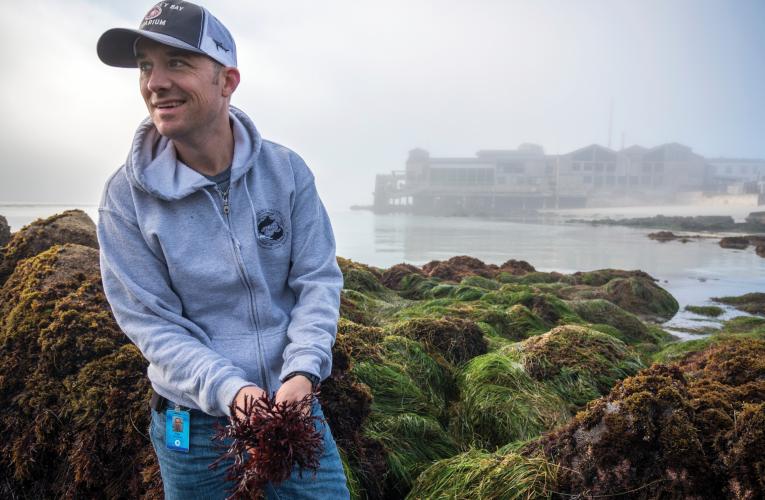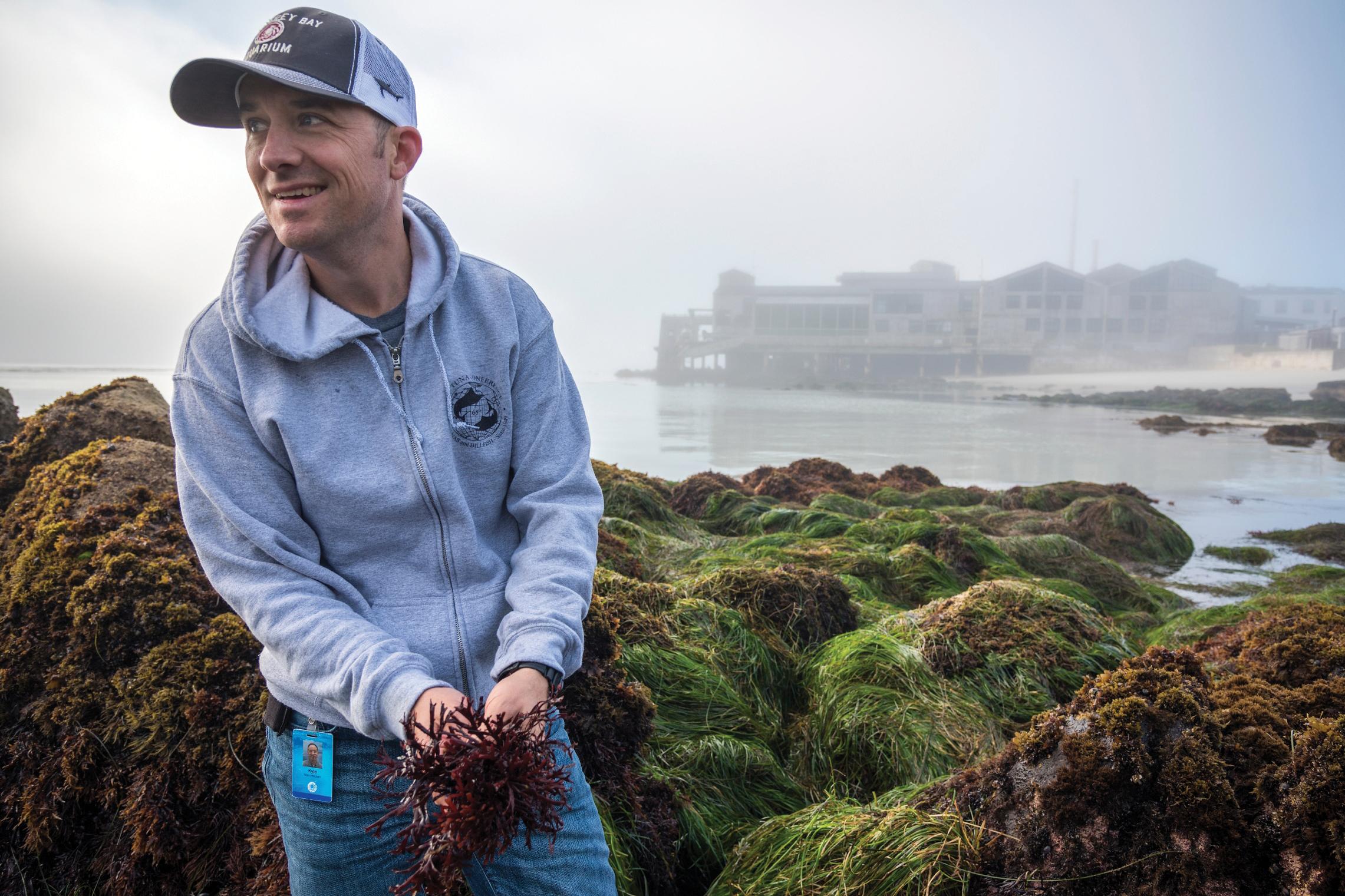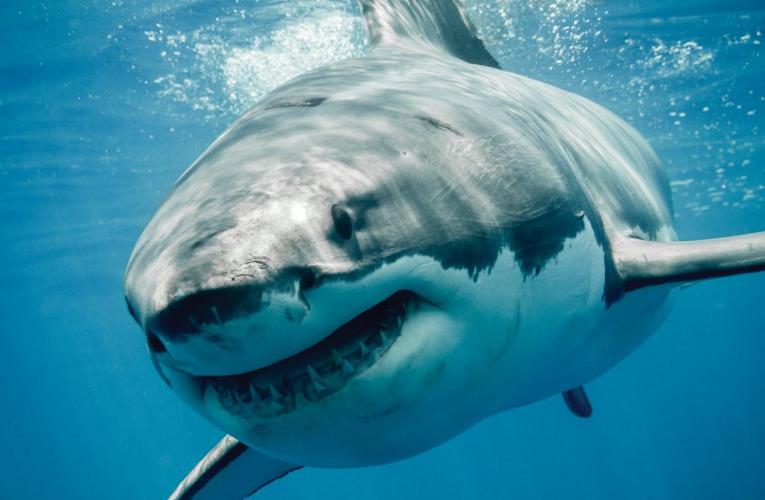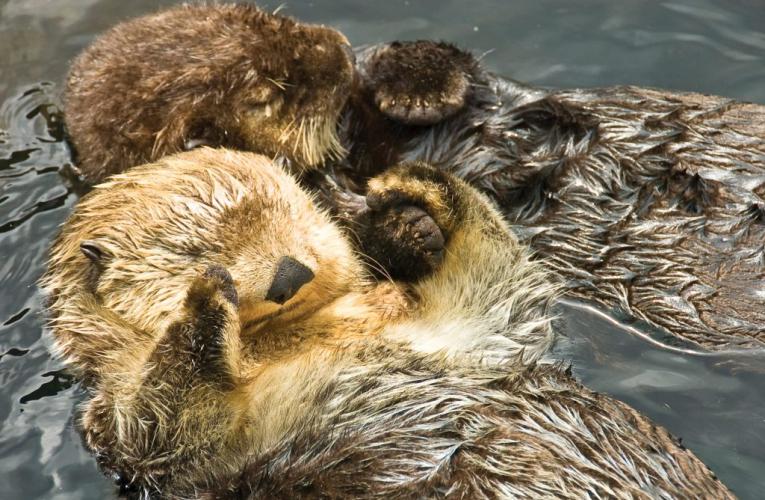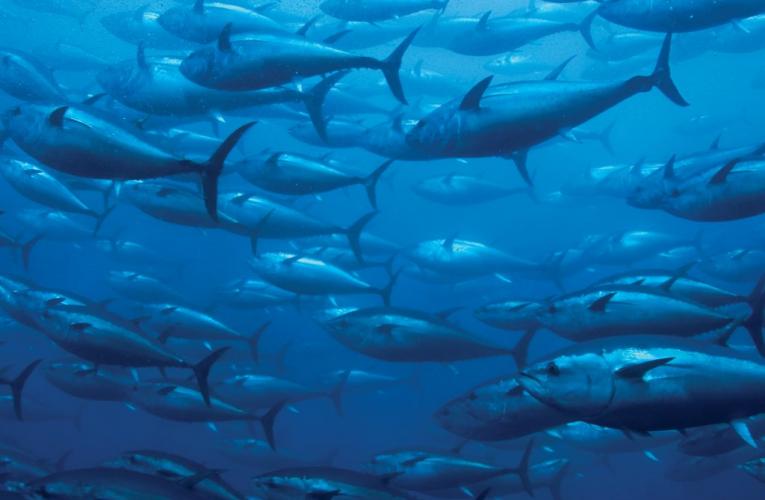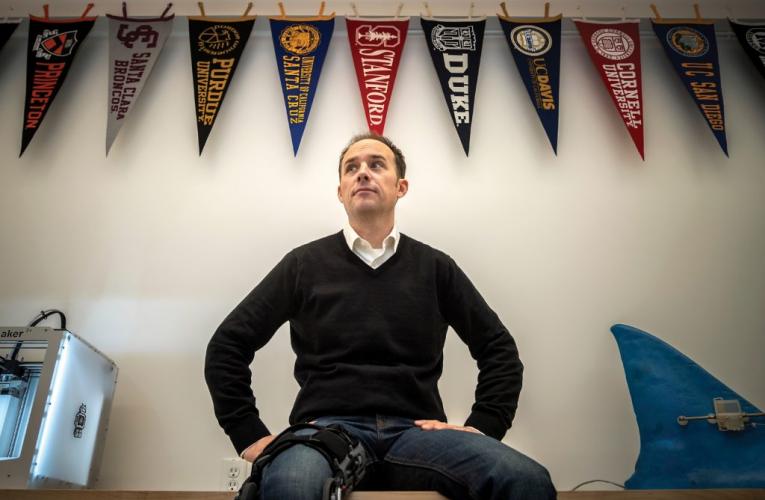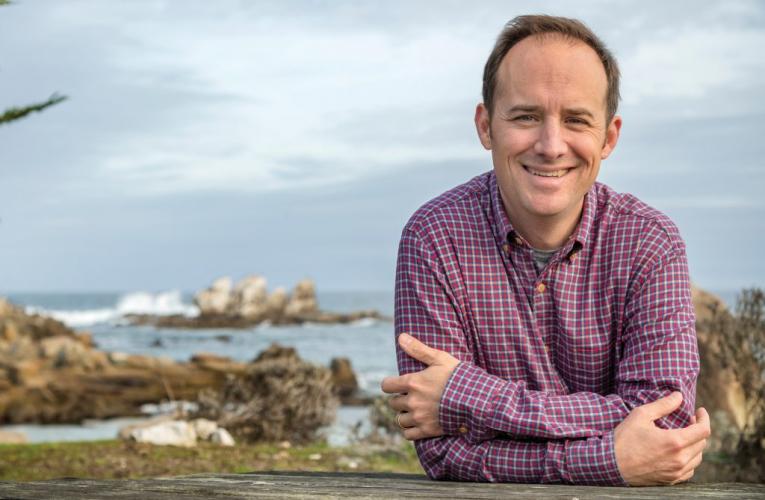Tim Lucas
(919) 613-8084
tdlucas@duke.edu
By Sandra J. Ackerman Photography by Monterey Bay Aquarium & iStock
On a map of California, Monterey Bay looks like a small bite taken out of the coastline just south of Silicon Valley. With a deep underwater canyon a short distance offshore, where the cool California Current mingles with nutrient-rich waters upwelling from the canyons, the area is unique for the vibrant ecosystems it contains. This is home to a great variety of marine mammals, fish, seabirds and innumerable species of plankton. It’s also an ideal setting for the Monterey Bay Aquarium, whose purpose, in the words of one of its officers, is to “cause people to fall in love with the ocean.”
Certainly, the Monterey Bay Aquarium draws many admirers to the ocean—roughly two million people visit each year—but this facility also has another aim, to convert that wonder and awe into a desire for conservation.
In this effort, the scientific staff plays a crucial role. Kyle Van Houtan, the Aquarium’s director of science, oversees 30 employees and about 100 volunteers. It’s a wide-ranging responsibility, he says: “There’s not a single message or placard on the aquarium floor that doesn’t come across my desk.”
Van Houtan was hired two years ago as part of “a reimagining of our strategic plan,” says Margaret Spring, the aquarium’s vice president and chief conservation officer. The new plan called for focusing on a few iconic species to convey their ecosystem roles and the vital importance of ocean conservation. With his PhD in ecology and environmental ethics from the Nicholas School, Van Houtan had a scientific perspective well-suited to the shift under way at the aquarium. Spring says, “The way he presents information is something along the lines of, ‘How can we tell the story of climate change through an animal?’”
Mascots of Conservation
The aquarium’s research on Pacific Ocean wildlife and ecosystems focuses on three ocean species to explore long-standing issues of conservation: great white sharks, southern sea otters, and Pacific bluefin tuna. In all three cases, a closer look at the animal has yielded insights that are useful for conservation efforts.
Sharks suffer from a fearsome reputation that they don’t deserve. “You’re far more likely to be harmed by your automobile than by a great white shark,” says Van Houtan. By contrast, humans represent a real threat to shark populations worldwide: both because of accidental capture (“bycatch”) by commercial fishing operations and because of strong demand for shark fins and other parts of the animal, it’s estimated that up to 100 million sharks are killed each year. Scientists at Monterey Bay are working with other researchers and policymakers internationally, as well as in the United States, to promote sustainable fishing practices, reduce bycatch, monitor shark populations and conserve habitats critical to their populations.
Sea otters play an underappreciated role in maintaining coastal ecosystems such as the kelp forests and estuaries in Monterey Bay. Kelp forests support vital communities of fish, but the fronds of the kelp are a tempting food for sea urchins; otters, by preying voraciously on sea urchins, help to keep that population in check and thereby spare some of the kelp.
Sea otters play a similar role in coastal wetlands, keeping crab populations in check so eelgrass can thrive and provide vital nursery habitats for a host of species like Dungeness crab. Through its one-of-a-kind program for sea otters, now in its 30th year, the aquarium rescues stranded pups and reintroduces them to the wild, while also conducting scientific research on sea otters’ interactions with their environment.
Even the bluefin tuna has a public-image problem, according to Van Houtan. “This is really a fascinating creature,” he says. “It’s a top predator; it’s warm-blooded, which is unusual for fish; and it’s a gold-medal athlete, migrating thousands of miles across the ocean each year.”
Because the market for tuna is consistently strong in many parts of the world, Pacific bluefin tuna have been fished so intensively that the entire population is down to just 3 percent of its historical biomass. Scientists from the aquarium began working with fishery managers in the mid-1990s to rebuild the Pacific bluefin population and put it onto a path toward sustainability. Fortunately, in recent years, a growing number of research groups and policy agencies have joined in these efforts, which in 2017 led to a major victory—an international agreement to recover Pacific bluefin tuna populations.
Information Everywhere
“Kyle’s work is very innovative,” says Spring. “He takes an ecosystem-wide approach, but he’s also—and this is rare—a very talented storyteller.” Perhaps one of Van Houtan’s greatest talents is to find potential stories in the most mundane-seeming observations. He likes to use information that others have overlooked, saying, “I call a lot of things data that don’t look like conventional data.”
For example, many body parts of animals can be seen almost as sensors, keeping a faithful record of their environment throughout the animal’s lifespan. “Equipped with our modern ability to analyze the chemical composition, museum collections of shells, feathers, bones or even whale earwax, open up the opportunity to go back a century or more and find out what the ocean was like,” he says.
This kind of approach was the inspiration for the aquarium’s new “Ocean Memory Laboratory,” where, in Van Houtan’s words, “The animals are helping us to tell the stories of the ocean where they lived.”
In a recent study, he examined samples of shell from Hawaiian hawksbill sea turtles, using traces of radioactive carbon in the Pacific from 1960 to 2015, in the wake of thermonuclear-bomb testing, to age the turtles and estimate when they reach maturity. Before that, he had pored over old menus from long-forgotten Hawaiian restaurants to illustrate a loss of diversity in local seafood species due to over-harvesting.
Van Houtan’s knack for gleaning data from outwardly uninteresting sources is “like opening a treasure box of information,” says Spring, “and this fits very well with our mission, because, before anything else, we want the science to excite people.”
From Birds to Ethics to Oceans
At a critical juncture in Van Houtan’s academic career, he says, “I turned down what I thought was my dream job to take what turned out, in fact, to be my dream job.” He had focused on biogeochemistry as an undergraduate, then studied bird behavior in Peru. At Duke, while tracking birds in the Amazon for his doctoral degree, he took some ethics classes at the Divinity School, to learn about better ways to explore the questions and assumptions that can sometimes arise in science and conservation.
Then came a couple of years at Emory University in a postdoctoral program in science and religion. At the intersection of these two seemingly disparate vantages, Van Houtan deepened his appreciation for the value of communicating with and relating to different groups of people—to identify important issues and find productive ways to look at those issues.
It was in his next post, at the National Oceanic and Atmospheric Administration (NOAA) in Hawaii, that Van Houtan came under the spell of the ocean. As he puts it, “After the first couple of years in Hawaii, seeing the incredible role of the ocean in buffering climate change, I was hooked.
“I used to think of the Amazon rainforest as the lungs of the planet, but what I’ve learned since then is that 50-85 percent of the oxygen we breathe comes from phytoplankton in the ocean. It’s an understatement to say, as many people do, ‘The ocean drives the climate system.’ A more poetic way of putting it might be that the ocean is the beating heart of our climate system.”
Here at the aquarium, he says, “We don’t have the scale of research of a university and we can’t affect policy like NOAA, so we’ve had to find our own niche. An example is our Seafood Watch program, which we started to provide information to consumers and have now shifted to working with producers all over the world to reform fishing and aquaculture practices for more sustainable seafood.“
For other big projects such as reducing plastic pollution in the ocean, Monterey Bay has joined with 21 other major American aquariums to form the Aquarium Conservation Partnership, which is launching a public-awareness campaign and pursuing business commitments to reduce reliance on single-use plastics significantly over the next few years. But being driven by science, the aquarium’s science team has joined with its partner institution the Monterey Bay Aquarium Research Institute (MBARI) to explore the fate of microplastic in the ocean’s deep.
The Monterey-Duke Connection
Van Houtan still keeps up his ties with academia, teaching a couple of classes at the Nicholas School every year as an adjunct associate professor in environmental sciences and policy. In addition, he continues to work with master’s degree students on their projects and usually brings two or three graduate students to work at the Monterey Bay Aquarium as interns.
The aquarium has hired another two people from the Nicholas School: Andre Boustany, as principal investigator of fisheries, and Jerry Moxley, as postdoctoral scientist. But the Duke connection extends even further than that, because Van Houtan’s boss, Margaret Spring, also is an alum. Spring received her law degree from Duke Law School; and while at Duke Law helped to found the Duke Environmental Law and Policy Forum.
Boustany, whose time at Duke overlapped only briefly with that of Van Houtan, now works closely with him in looking at the historical ecology of the Atlantic bluefin tuna as gleaned from stock assessments and other old records.
“Until recently, tuna wasn’t much valued or closely monitored—in fact, sadly, it was considered fit only for pet food,” Boustany explains. This attitude began to shift in the 1970s with the advent of air travel, as fish buyers from Japan began purchasing more and more bluefin abroad for their clientele back home.
Boustany also is studying the age at which Pacific bluefin tuna can reproduce; if it turns out to be significantly older than had been thought, this finding might cause regulators to set a higher minimum age for harvesting, to allow the stock to replenish. Another study focuses on diseases that occur often among bluefin tuna in captivity but only rarely in the wild. Insights gained from this study may be helpful not just in aquariums but also hold promise for aquaculture where fish live in dense populations.
Thanks to generous support from donors and sponsors, the Monterey Bay Aquarium, a 501(c)(3) nonprofit, continues to find new and creative ways to inspire conservation of the ocean. The aquarium has added a new lab and a shop for designing sophisticated electronic tags that are almost imperceptible to the animals wearing them.
Researchers now have the means to track ocean wildlife and collect all kinds of data about their environment in the open ocean—temperature, acidity, salinity, and so on—all while minimizing the impact on animals’ movements. Like tiny Fitbits for conservation.
“Science may seem like a kind of blood sport at times, but here we’re lucky,” Van Houtan muses. “The aquarium is a place that people have a lot of respect for. What’s great about my role is that when we find a cool piece of science, it goes through peer review, gets published, and we can push that out to inform the public right away.
“Just as special is that you see people here from all walks of life, from all beliefs and political persuasions and from every country,” he says. “Day by day, many thousands of people come here to fall in love with the ocean, then return home eager to take care of it.”
Sandra J. Ackerman is a science writer based in Durham, N.C., and is a member of the National Association of Science Writers.
